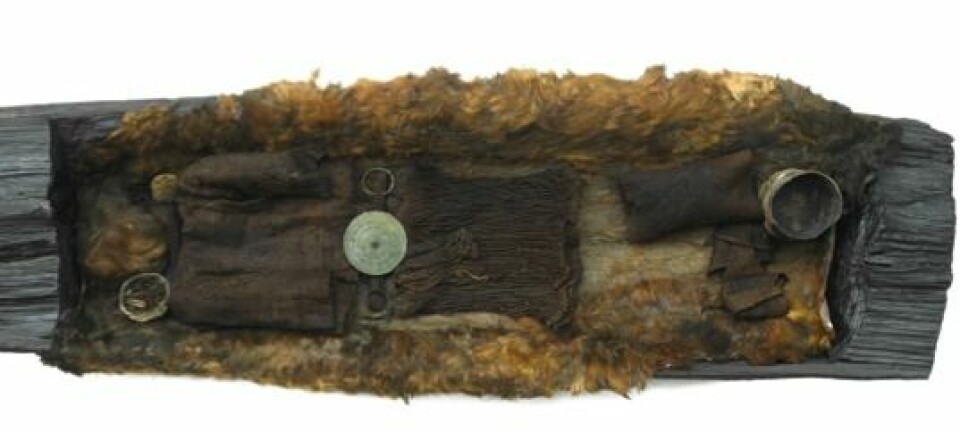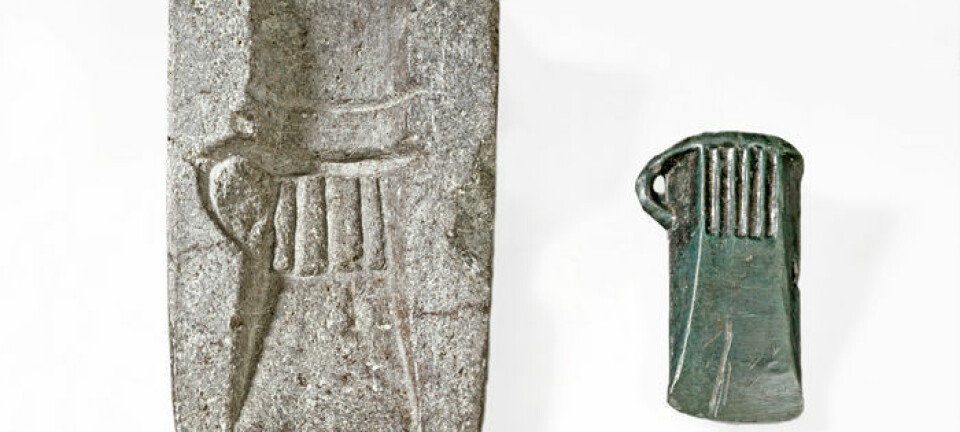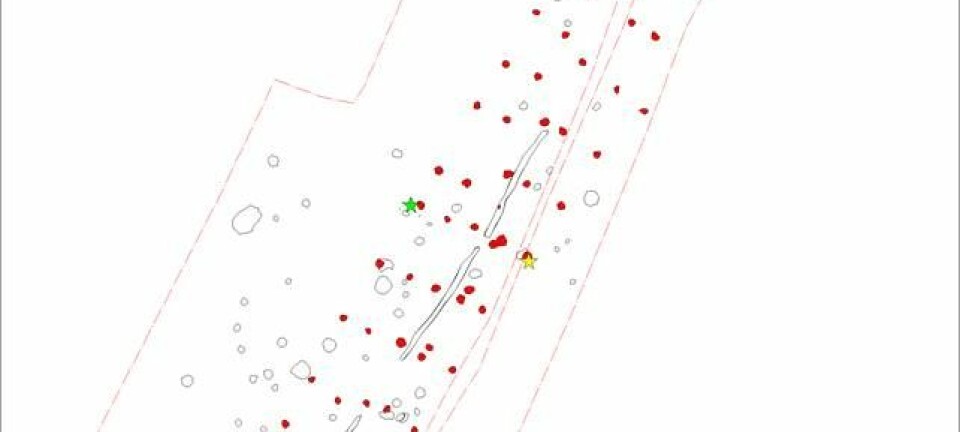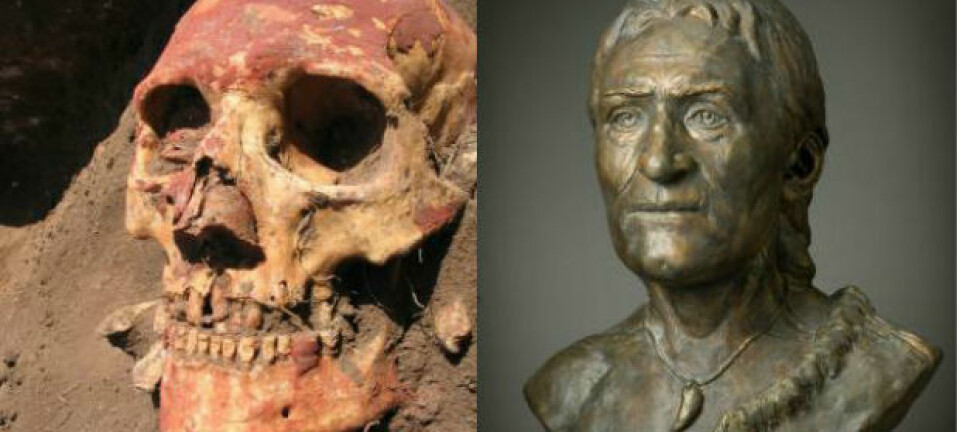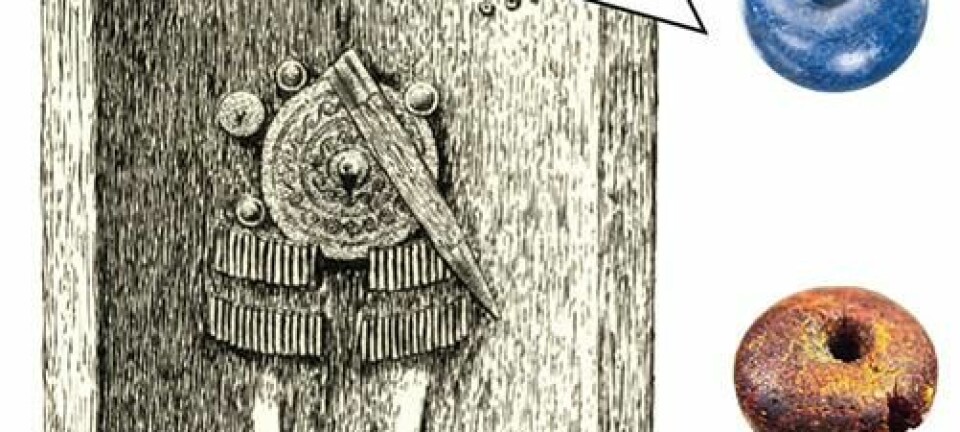
Another female Bronze Age icon is now known to have travelled across Europe
Egtved Girl is not alone: Skrydstrup Woman also travelled far and wide, say scientists after analysing Skrydstrup Woman’s hair, teeth, and bones.
The discovery in 2015 that the remains of the teenage Egtved Girl discovered in Denmark were not in fact Danish caused an outcry. Partly because this Danish Bronze Age icon turned out not to be Danish after all, and partly because she demonstrated that Bronze Age people travelled far and wide—including women.
And the discovery raised one important question: were there others like her?
Archaeological scientists from the National Museum of Denmark can now say, yes, there were. They have discovered that a woman who was buried in Skrydstrup, southern Jutland in west Denmark, around 1300 to 1200 BCE, was not Danish.
Analyses suggest that she could have come from south Germany, France, Sweden, or The Czech Republic, and researchers are now trying to pinpoint her exact origins to see just how far she may have travelled.
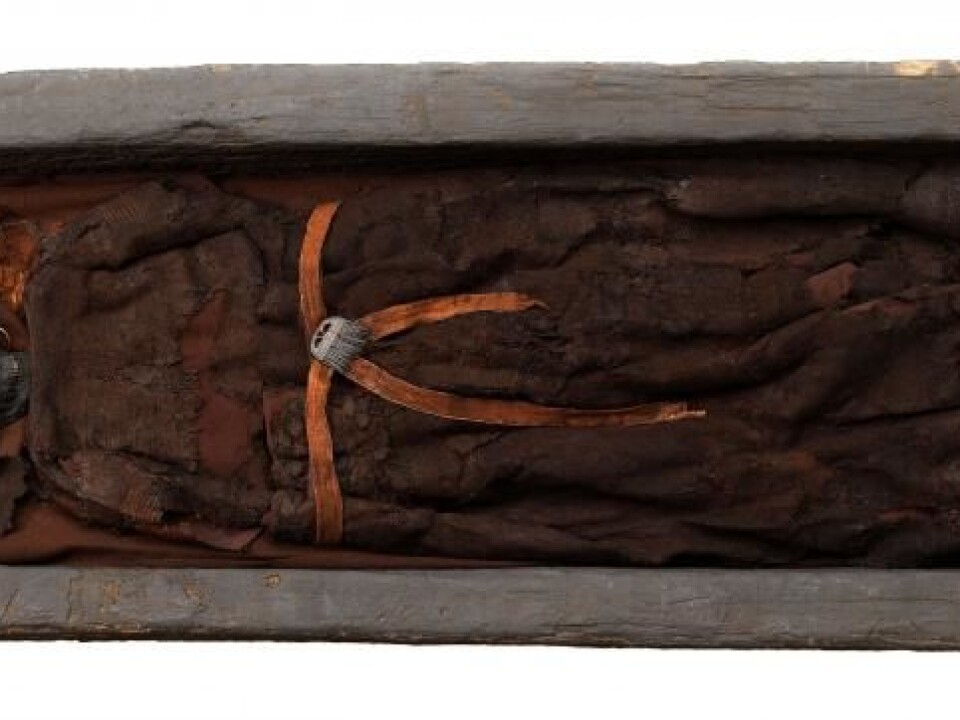
It opens up for a new understanding of the European Bronze Age, says Professor Karin Frei from The National Museum of Denmark who is behind the discovery.
“We can’t say with 100 per cent certainty where she came from, and we may never be able to, but she definitely wasn’t Danish. It gives us so many new perspectives. Now we know that Egtved Girl was not an isolated case,” says Frei.
Read More: A famous Danish Bronze Age icon turns out not to be Danish after all
Similarities with Egtved Girl
Egtved Girl and Skrydstrup Woman lived at approximately the same time period and both died at a young age--16 to 18 years. They were both buried in oak coffins under a burial mound, which was an elite way to be buried. And they were both foreigners. But this is where the similarities end.
Egtved Girl was a frequent traveller in her later years, and only spent a short period of her life at Egtved--probably only a few months--where she died. But Skrydstrup Woman made just one long journey before she died and was buried in what is now Denmark.
It is now clear that she came to Skrydstrup at the age of around 13 or 14, which was considered a marriageable age for girls, and that she lived here until she died. Unlike Egtved Girl, there is nothing in the analyses of her hair, teeth, or nails that suggests she suffered from a prolonged period of illness or malnutrition.
She was buried in the centre of a burial mound. Two men, whose relation to her is not yet known, were found buried on the side of the same mound. All of this points to a woman of great importance.
Read More: Danish Bronze Age glass beads traced to Egypt
Skrydstrup Woman was an elegant queen-like figure
Alive, Skrydstrup Woman would have been striking. She was approximately ten centimetres taller that most other women with long, thick hair tied up in an intricate fashionable style, which would have added a further ten centimetres to her already impressive height.
She dressed in beautifully embroidered clothes, with big gold earrings draped over each ear. She had long, sleek limbs, and would have wanted for nothing her entire life.
“I see a very elegant woman. A queen-like figure. I’ve no doubt that when she came in through the door, people thought “wow”,” says Frei.
Read More: History rewritten: Europeans were “born” in the Bronze Age
Srontium reveals our origins
Frei is world-renowned for developing an analytical method to measure the ratio of strontium in a person’s hair and nails, or textiles. She has now applied the method to Skrydstrup Woman.
Strontium is found naturally in soils and water, and enters the food chain via plants, the animals that eat them, and so on, until it ends up in people. The composition of the different types of strontium—so-called isotopes—contained in an individual’s teeth, nails, and hair, is directly related to the soils, plants and animals, where they live.
By analysing the strontium isotopic composition of an individual and comparing that with known compositions for different parts of the world, scientists can decipher where an individual may have came from and lived throughout their life.
A quick overview of Skrydstrup Woman and Egtved Girl: where they were discovered and where they may have come from (Credit: ScienceNordic / Charlotte Price Persson / Mette Friis-Mikkelsen).
Skrydstrup Woman's origins overturn earlier theories
Archaeologists already knew quite a lot about Skrydstrup Woman’s life.
The area where she was buried is known to have been a centre of wealth, due to the large number of Bronze Age burial mounds and impressive long-houses that have been excavated in the area. Lots of bronze and gold have also been found in the area.
Close to where Skrydstrup Woman was buried, archaeologists have discovered two large long-houses. One of which is the largest known “three-aisled” houses from the early Bronze Age—it was 500 square metres in size.
Archaeologists had thought that Skrydstrup Woman’s grandparents or great-grandparents built the house, but the new results overturn that interpretation.
Read More: Five massive Bronze Age axes unearthed in Denmark
A young girl travelled to make an alliance
Skrydstrup Woman was originally discovered in 1935. The inner part of the mound, which was dedicated to her, was 13 metres in diameter, according to Museum Sønderjylland. It was later covered by a larger grave, in which two men were buried.
The burial itself is an important part of Skrydstrup Woman’s story, says Frei.
“Skrydstrup Woman travelled once and stayed in the Skrydstrup area the rest of her life. So perhaps she came to make an alliance. That could have been through marriage, but we don’t know. And we don’t know who the two men were. We can only tell that it was possible for women to travel and that people could integrate quickly into that society. Otherwise you wouldn’t have been buried in this way,” says Frei.
Read More: Burnt cheese casts light on 3,000 year-old family drama
Skrydstrup Woman probably died of an infection
Analyses of Skrydstrup Woman’s bones reveal her age and sex, but also whether she had suffered from a period of prolonged illness, malnutrition, or stress.
“We haven’t found any signs of chronic disease. On the contrary, her bones indicate that she was probably a well-nourished girl,” says post-doc Marie Louise Jørkov, from the Department of Forensic Medicine at the University of Copenhagen, Denmark, who conducted the analyses.
“In all probability she probably died of an infection: flu or some virus that did not show up in her skeleton. It would show up in the blood, which obviously isn’t preserved today,” says Jørkov.
Skrydstrup Woman’s bones are witness to her impressive height, which would have been around 170 centimetres tall, says Jørkov.
“The bones were very long, she was certainly a tall girl compared with her contemporaries. We don’t have many other finds, because people began cremating their dead not long after this. But we can see in corresponding discoveries for example from Borum Eshøj [another Bronze Age burial mound in Denmark] that they had shorter and more robust bones,” she says.
Read More: New method reveals the secrets of bog bodies
Part of a larger project investigating women's roles in Bronze Age scoieties
The results have been submitted to a scientific journal and will now go through a peer review before they are published. ScienceNordic will follow up with Frei and her colleagues progress.
In the meantime, the archaeologists will continue with the project “Tales of Bronze Age Women,” in which Frei and her colleagues are studying a number of well-preserved oak-coffins of Bronze Age women to investigate their role in Bronze Age society.
This approach is “fruitful” says archaeologist Professor Helle Vandkilde from Aarhus University, Denmark.
“Oak-coffins are such fantastically well-preserved source materials that make it possible to focus on each individual to an exceptional degree. This biographical perspective is especially new and exciting,” she says.
Vandkilde is not involved in the project herself and has not yet seen the unpublished results, but she is familiar with Frei’s work in general. While the precise interpretation of Skrydstrup Woman’s origins are not yet a done-deal, one thing is clear she says: both Egtved girl and Skrydstrup Woman have “definitely travelled.”
Frei is now planning to investigate some of the other well-preserved burials in Denmark.
Next on the list are the individuals buried at Borum Eshøj mound in Central Jutland, which contained the remains of an older woman, and two men. Only time will tell if this woman also travelled from far away.
“Suddenly, these women have a much larger role in this society, because they're outsiders with new knowledge and know-how that would have been of great value. I’m beginning to think that they had a greater importance than we have previously attributed to them. But all of that still remains to be seen,” says Frei.
----------------
Read the more in the original article on Videnskab.dk
Translated by: Catherine Jex


